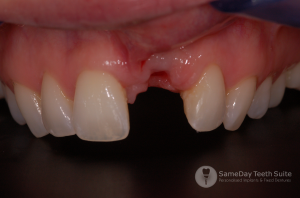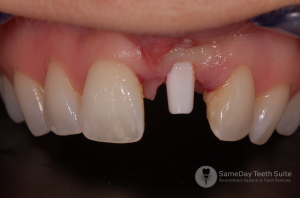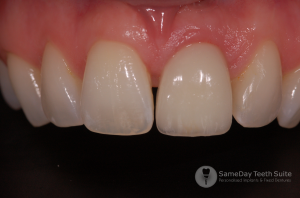Watch this video to hear about the experience of this lady who had all her teeth taken out and replaced with implants and Swiss dentures at the Same Day Teeth Suite:
Losing all your teeth can be a traumatic and life changing experience. It can happen when you have gum disease that has progressed so far that the only solution is to remove any remaining teeth and insert a denture. Fortunately, replacing those damaged teeth has taken a significant leap forward in recent years with the development of technologies that create a far better fit for dentures, almost indistinguishable from your normal teeth.
At the Same Day Teeth Suite, we’ve treated many happy people who now have their smile back. As one of our recent patients told us: “I’ve had all my teeth taken out because I had a few loose teeth left and I’ve had Swiss dentures put in and implants. The care has been wonderful and I can’t complain. They’ve never hurt me.”
Dentists have long known that we all eat and chew in different ways. The problem with average NHS dentures is that they are not made to fit a particular individual to the degree is needed. There are certain variables to take into account including the shape and size of the jaw and the way the upper and lower set of teeth interact with each other when chewing.
Badly fitting dentures can be as troublesome as damaged teeth, causing problems with eating and destroying confidence. Looseness is another problem that normal denture wearers habitually suffer from that causes problems on a day to day basis. The Swiss denture is designed to fit perfectly and installed by a qualified dentist can give patients a new set of teeth that actually behave like their real ones.
Swiss dentures are also known as BPS or Biofunctional Prosthetic System and are designed using a variety of moulds and shapes to fit the patient’s mouth almost perfectly. Basically they are a bespoke design for each individual patient and they fit with a combination of denture and implant that means they don’t move around like normal dentures.
If you have been suffering from gum disease and have lost a number of teeth or had to suffer ill-fitting dentures for a while and want something better, Swiss dentures may be the perfect answer for you. They mean that you can move your teeth normally, chew safely and not worry about dentures coming loose at that vital moment.
Putting in Swiss dentures is a fairly quick and easy process under the expert gaze of a qualified dentist. As our recent patient epitomised, the problem some patients have is they think it is going to be a painful process having the remaining teeth removed and the denture put in place. He was impressed by how pain free the process was and would certainly recommend us to his friends and family.
Replacing teeth that have been irreparably damaged through gum disease has never been more hi-tech and affordable. At the Same Day Teeth Suite, we pride ourselves in the personal service that we provide patients, talking them through the process and providing them with a healthy, fully functioning set of teeth that look natural and feel natural. Contact us today to find out more.



